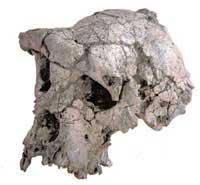The language of fossils a story full of frauds
2001/07/22 Kortabarria Olabarria, Beñardo - Elhuyar Zientzia
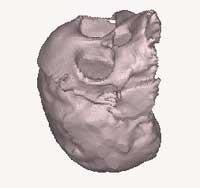
The discoveries have led scientists to review some of the existing theories. Before saying anything, however, it will be better to properly check the findings, since they have put paleontologists on more than one occasion.
Paleontology studies beings, animals and plants, who lived in the past on Earth, that is, fossils. Paleontology is not only descriptive, it wants to know how the beings that have existed lived, how they moved, why they died, how their genetic relationships were, etc. All this based on the research of fossils. Therefore, paleontology is a very complex subject. Despite this complexity, the results of the works carried out by paleontologists are evident, today almost fully accepted, both by creationists and by their application.
However, in the history of paleontology there have been times more black than those of today, to the point that in this interpretation of the past the term ‘fraud’ has been put in place. There are several examples:
The man of Piltdown . It happened in 1912 in England. After discovering remains of a skull in the village of Piltdown, they concluded that in the past of the island had hominid. The Natural History Museum, the Geographical Society and prestigious scientists investigated the discovery and confirmed its value. 1953. Anatomical techniques were used to study the skull footprint. In 1953 the fossil was restudied, but with chemical techniques. They came to the clear conclusion: the tracks did not belong to any human being and, in addition, everything was a fraud. The footprints were made with the skull of a human being and the lower jaw of an orangutan. It has never been known who prepared the fraud.
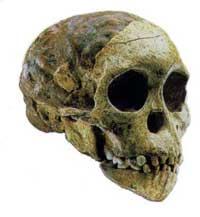
The man of Nebraska was an error, not a fraud. In 1922 the director of the Natural History Museum of the United States, Henry Faifield Osborn, collected an uncovered yew in Nebraska. After his research, Osborn pointed out that this yew had characteristics of monkeys and humans, so it could belong to some hominid. Other seasonal scientists joined the thesis of Osborn. Five years later, in 1927, more remains of the Nebraska man were discovered. These remains made it clear that the yew was not of the man of Nebraska, but of a sort of missing pig.
The struggles in paleontology have been more desperate than the previous one, like that of the child of Taung. It also occurred in 1912. A young researcher, Raymond Dart, discovered in South Africa fossils of bones, remains of the skull and the face of a child, according to all appearances.
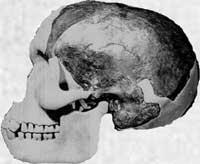
The young researcher noted that they were the oldest human remains discovered on Earth, of the species Australopithecus africanus. The most prestigious professors, researchers and scientists of the time left without effect the discovery of Dart. He did not resign and 30 years later, with biochemical techniques, they had to accept the value of the discovery. The discovery of seven other traces of the Australopithecus africanus also contributed to the discovery of Raymond Dart.
The case of Ramapithecus also shook the bases of paleontology. In 1958 two researchers from Oxford and Cambridge indicated that the first ancestor of man was the Ramapithecus, a primate with 30 million years old and much like the orangutan. Biochemical tests carried out in 1983 determined that Ramapithecus was alien to human evolution.
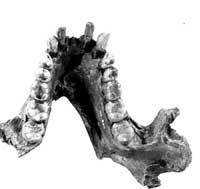
They have also influenced frauds with dinosaurs. Last year, for example, two cases were resolved. The first took place at the Cardiff Museum in Wales. The dinosaur fossil that has remained for 116 years before visitors was not real, as it was made with bones, plaster and paint. Seeing that the museum managers began to fall pieces of plaster, they realized the fraud. They took up the question of philosophy and, together with the case of the false dinosaur, have organized an exhibition on the frauds that have occurred in the history of science. Something similar happened at the Smithsonian Museum in Chicago. Since 1905 they have had in public the fossil of a triceratopo, until last year they realized that it was a structure made with bones of other 14 animals.
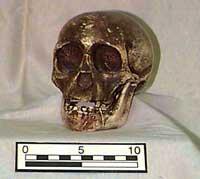
In addition to these cases in the history of paleontology, there are currently debates. Perhaps the man of Orce is the most representative. In 1982, the fossil of a skull was discovered at the Venta Micena site in Granada. It was discovered by paleontologist José Gilbert and he himself claimed that they were the remains of a hominid child between 1.5 million and 1.8 million years old. Scientists accepted the discovery and that of Orce would be the oldest man in Eurasia. However, there are currently scientists who claim that the footprints are of a horse, not of hominids. According to the biochemical studies that have been carried out, the origin of the traces is human, but the debate is there.
As seen, the debate about the ancestors and the past of the human being does not cease. It cannot be denied that sometimes it has acted with lightness, thinking that the hypotheses extend and become theses, while on other occasions it has acted with bad intention, adapting the past to the theory itself. However, in most cases, even though it has been scientifically worked, there have also been errors, since the new techniques have cancelled the tests that were accepted in a time. The techniques of the future will be witnesses of this.
Published in 7K

Gai honi buruzko eduki gehiago
Elhuyarrek garatutako teknologia





